The 19th century plant hunters who helped make Caerhays Castle's incredible collection
The magnificent gardens at Caerhays Castle in Cornwall are every inch the equal of the building which dominates the landscape, thanks to extraordinary efforts of collection, cultivation and breeding stretching back four generations. Jacky Hobbs explains.
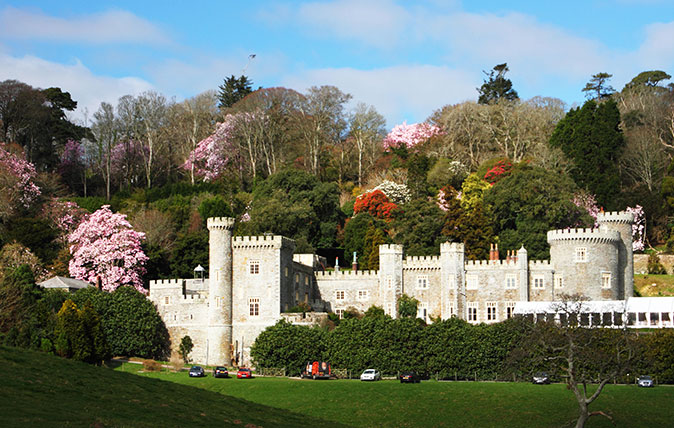

The Grade I-listed Caerhays Castle, designed by Nash, dates from the early 19th century, but it was a 20th-century partnership forged between plantsman John Charles Williams (1861–1939) and plant hunters E. H. Wilson (1876–1930) and then George Forrest (1873–1932) that secured rich botanical booty for the gardens.
The plant hunters scoured Yunnan province in western China, for new, largely ericaceous, flowering shrubs and trees and, by sponsoring intrepid expeditions, Williams was rewarded with access to the first of hundreds of exotic plants and seeds new to Western eyes.

Many thrived in their new Cornish surroundings, as their aspect and climate somewhat resembled the plants’ native conditions and the steeply sloping, coastal site and impenetrable shelter belts of trees protected the precious Oriental specimens from westerly gales.
High rainfall and Cornwall’s relatively mild spring temperatures afforded the requisite moisture and humidity. The specimens were densely planted, replicating their natural habitat, and this organic woodland style still characterises the nature of the garden today.

Caerhays and the Williams family are famed for their camellias, boasting the first cross between Camellia japonica, introduced to Caerhays in 1902, and early-flowering C. saluenensis. This spawned the ground-breaking, hardy hybrid C. x williamsii crosses, one of Europe’s most popular camellia groups, now with more than 20,000 named cultivars worldwide.
Typical C. x williamsii shrubs are hardy, long-flowering and have large blooms that fall from the bush, rather than browning ungraciously in situ. A notable cross between C. saluenensis and C. japonica Lady Clare produced C. x williamsii Caerhays, the first of many williamsii double-flowered cultivars.
Although C. x williamsii doubles rarely set seed in this country, Caerhays has worked closely with overseas breeders in warmer locations, such as California, to develop innovative doubles. As new, yellow-flowered camellia species have recently been discovered in China and Vietnam, the door has opened further to new hybrid opportunities.
Exquisite houses, the beauty of Nature, and how to get the most from your life, straight to your inbox.
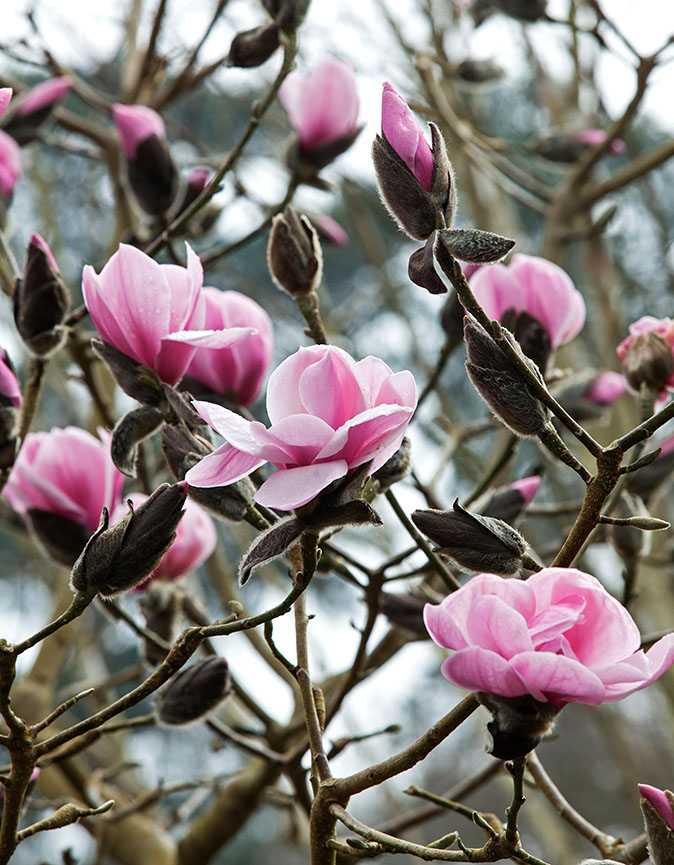
Magnolias are also intrinsic to the gardens at Caerhays, which today hold a National Collection comprising more than 80 species and 500 named cultivars, flowering tumultuously throughout the spring.
In 1887, Williams planted his first Magnolia stellata, which, 130 years on, just about survives today. Other early specimens have proved more robust: M. sprengeri Diva (planted in 1912) and M. x veitchii (planted in the 1930s) continue to flower profusely in the garden and are now massive Champion trees.
As some species are now virtually extinct in their Chinese source forests, having been felled for firewood, cleared for agriculture or ring-barked by goats, Burncoose has propa-gated new plants from the original, surviving specimens at Caerhays. In this way, it has been able to facilitate the reintroduction of species to the affected hillsides in China and engages in plant-exchange programmes around the world.
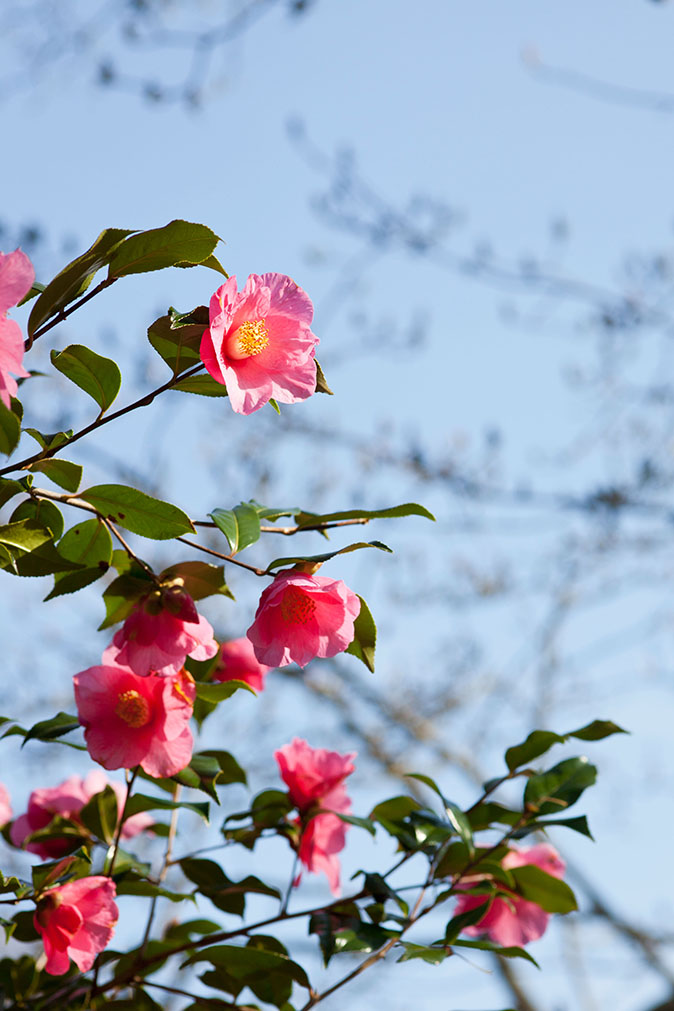
From New Zealand breeders, the garden acquired magnolias Star Wars and Apollo, as well as newer red introductions such as Ian’s Red, Red as Red and Genie, the latter potentially the darkest-flowered magnolia to date. Caerhays boasts 28 named yellows, including Yellow Lantern and Gold Star, from America, and more recently, pale-lemon Dutch introductions Daphne and Lois.
Breeders aspire to achieve a pure, rich yellow flower opening in advance of camouflaging foliage. Dutch-bred M. Lemon Star, tucked away on the garden’s uppermost slopes, goes some way towards this.
Caerhays’ own introductions spawn from hybridising the estate’s species with a growing worldwide catalogue of more colourful hybrid magnolias. Innovative breeding by Philip Tregunna, third of only four head gardeners at Caerhays, created M. Caerhays Surprise in 1959 (a cross made with M. campbelli var mollicomata and M. liliiflora Nigra). This pink-flowered magnolia blooms after only 3–5 years (others can take 40 years to flower) and is compact enough for smaller gardens.

Caerhays Splendour is another vibrant pink, raised by the current head gardener Jaimie Parsons. The yellows have provided new colour for the gene pool. Caerhays, among others, is developing exciting peach/apricot-coloured magnolia hybrids, such as M. Peachy and M. Tropicana, a colour cocktail of lemon, peach and lime, currently in the process of official registration.
There has also been significant breeding breakthroughs crossing magnolias with Michelia and Manglietia (these have been recently reclassified as genus Magnolia). The availably of all genus types at Caerhays, under the umbrella of the National Collection, has presented unique breeding opportunities. The successful crossing of Magnolia acuminata Miss Honeybee with Michelia figo produced Magnolia Yuchelia, which first flowered at Caerhays in 2007 and is much admired for its distinctive form and colour.

Although no plant collection is ever complete, the co-existence, in close proximity, of ever-increasing numbers of both species and hybrid plants assures the future for a gene-ration of new cultivars at Caerhays, whether that be rhododendrons, camellias or magnolias. The latest generations of the Williams family are not only custodians – they also continue to create their own legacy.
Caerhays Castle, Gorran, Saint Austell, Cornwall – gardens open daily, February 19 to June 17. See more at www.caerhays.co.uk.
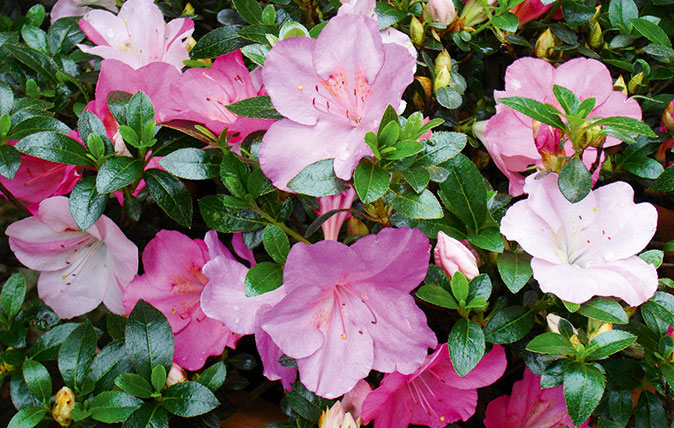
Credit: Mark Grifiths
The Japanese azaleas set to flourish across Britain's gardens
Mark Griffiths looks at Satsuki azaleas – one of Japan's most revered plants, and yet perfect for an English garden.
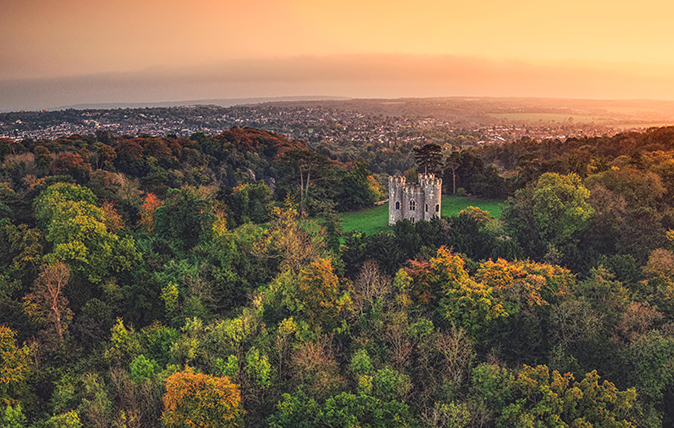
The practice of landscape: 10 great gardens by Humphry Repton
Humphry Repton was the leading garden-maker at the turn of the 19th century. Here are 10 of his best-loved gardens
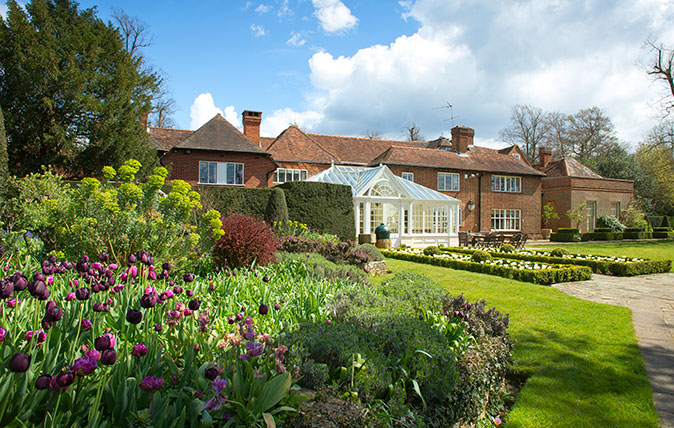
Dunsborough Park: A home for sale next door to Wisley with gardens that look like they've been created by the RHS
Dunsborough Park is an exceptional house, but it's 100 acres of gardens are far beyond even that, with some of

The best garden designers and landscapers in Britain
A beautiful country house is as much about its surroundings as its bricks and mortar, something that the best garden
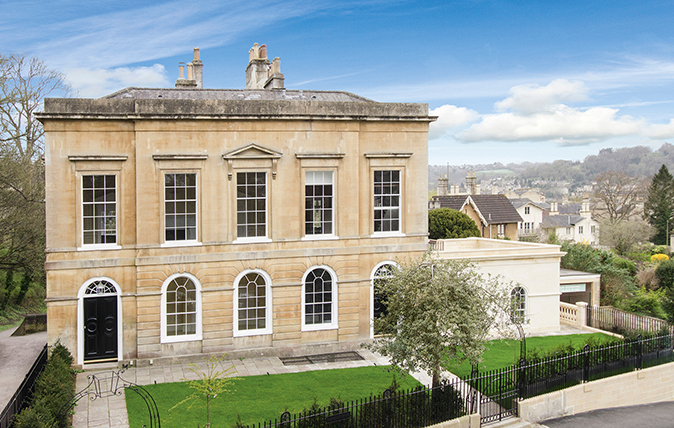
One of Bath’s most architecturally significant – and rare – Georgian buildings comes to the market
Originally named Canal House, Cleveland House is a Grade II* listed building situated in a prime position within the Bath
Country Life is unlike any other magazine: the only glossy weekly on the newsstand and the only magazine that has been guest-edited by His Majesty The King not once, but twice. It is a celebration of modern rural life and all its diverse joys and pleasures — that was first published in Queen Victoria's Diamond Jubilee year. Our eclectic mixture of witty and informative content — from the most up-to-date property news and commentary and a coveted glimpse inside some of the UK's best houses and gardens, to gardening, the arts and interior design, written by experts in their field — still cannot be found in print or online, anywhere else.
